Go to about.usps.com/resources/postal-bulletin.htm to browse past issues.

Impress family and friends with your knowledge of these facts about the lighter side of the Postal Service.
BULLETIN
On time. Every time. The Postal Bulletin, a nationally distributed biweekly publication, serves as a source for official policy, procedure updates and departmental news for all Postal Service functions. It has never missed a deadline since its inception in 1880.
Go to about.usps.com/resources/postal-bulletin.htm to browse past issues.

of our domains
The Postal Service owns 1,958 internet domains.
our mark
The Postal Service has 414 domestic and 982 foreign trademark registrations.
the best
Patently the best. The United States Patent and Trademark Office has issued more than 700 patents to the Postal Service.
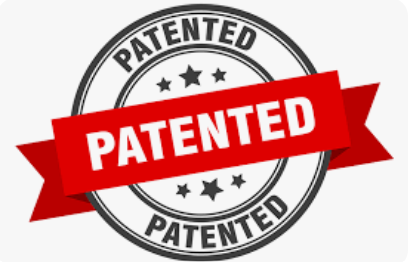
social network
The Postal Service is the original social network, but that doesn't mean we aren't represented on the other, newer social networks. You can find the Postal Service on Facebook, Instagram, LinkedIn, Pinterest, Threads, X and YouTube. We also have a blog and a podcast.
unstaffed Post Office
One of a kind. There is a 24-hour, unstaffed, self-service Post Office in Vienna, VA, that allows customers to conduct most shipping and mailing transactions quickly and easily themselves. The self-service Post Office provides round-the-clock accessibility to P.O. Boxes, as well as self-service kiosks and an automated package drop.
delivered by mail
The farm-to-table concept isn’t new. From 1914 to 1920, the farm-to-table program was a novel initiative that allowed farmers to arrange prices with people in urban areas and then mail them fresh meats, eggs, dairy products, produce, honey, jelly and more. This was a way to give farmers more customers and city dwellers greater and cheaper access to fresh goods.
CREATIVE
© is for creative. The Postal Service has more than 500 copyright registrations, many of them to protect artwork on postage stamps.
deliver!
The Postal Service moves mail by planes, hovercraft, trains, trucks, cars, boats, ferries, helicopters, subways, bicycles, mules and feet.
JUST NUTS!
Coconuts can be mailed without a box. Simply address the coconut and add your return addresses on the husk, have it weighed for appropriate postage, and it is shipped as-is. Photo: Coconuts ready for mailing at the Molokai, HI, Post Office.

potatoes in the mail
It's SPUDTACULAR! As with coconuts, potatoes can be mailed without a box. Simply write the address it's going to and your return addresses on the spud, have it weighed for appropriate postage, and it can be shipped as-is. Let someone know they are special. Send a tater!
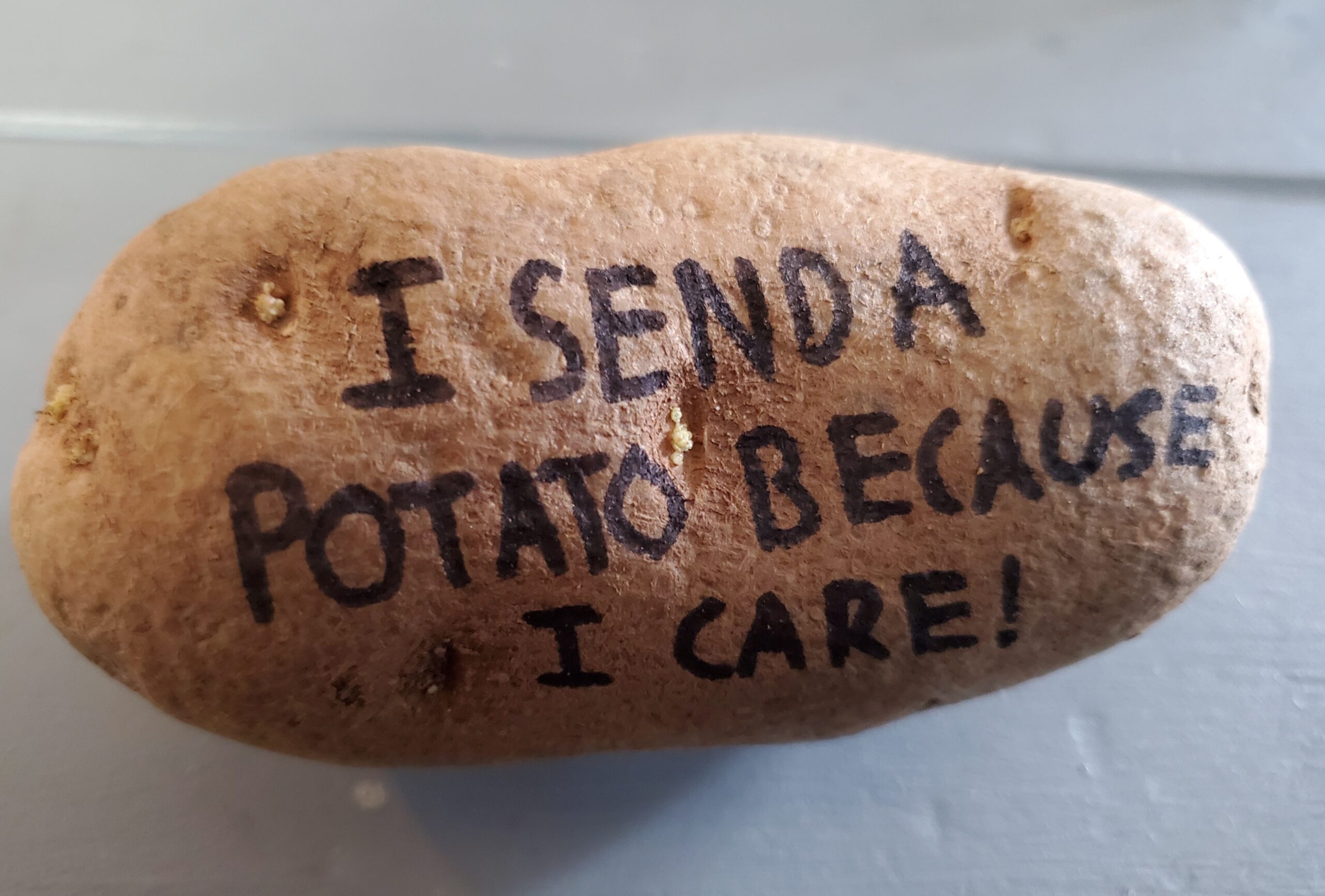
in the mail
Hope in the mail. In 1958, luxury jeweler Harry Winston donated the Hope Diamond to the Smithsonian Institution. With his years of experience in shipping jewelry all over the world, Winston sent the diamond via Registered Mail service with the Post Office Department.

The diamond was placed in a box, wrapped in brown paper, and sent by registered mail from New York in a Railway Post Office train car. In Washington, DC, it was picked up by a mail carrier and driven to the National Museum of Natural History. The price paid for shipping the gem, valued at $1 million at the time, was $145.29, most of that for package insurance.
gold in the mail
Under the watchful security of the Postal Inspection Service, Railway Mail Service clerks transferred some of the $9 billion in gold bullion shipped as Registered Mail from the New York City Assay Office to the depository at Fort Knox, KY, in 1941.
The Inspection Service provided security and management in the cooperative effort between the Post Office Department, local law enforcement, U.S. Army and U.S. Treasury Department.
in the mail??
Do not try to ship your kids! In the early days of Parcel Post service, a few parents managed to mail their children to relatives. In 1913, an 8-month-old baby in Ohio was mailed by his parents to his grandmother, who lived a few miles away. The baby was safely delivered! Regulations were quickly established to prevent any additional mailing of children through the U.S. Mail.

BRICK IN THE MAIL
Individual bricks can be shipped in the U.S. Mail. Get a permanent marker, write the address and your return address, get it weighed and add the postage. Send that special someone a brick of affection.
Just don’t think you can send enough bricks to build a house or, perhaps a bank. Been there. Done that. You can read about the bank of Vernal, UT, here.
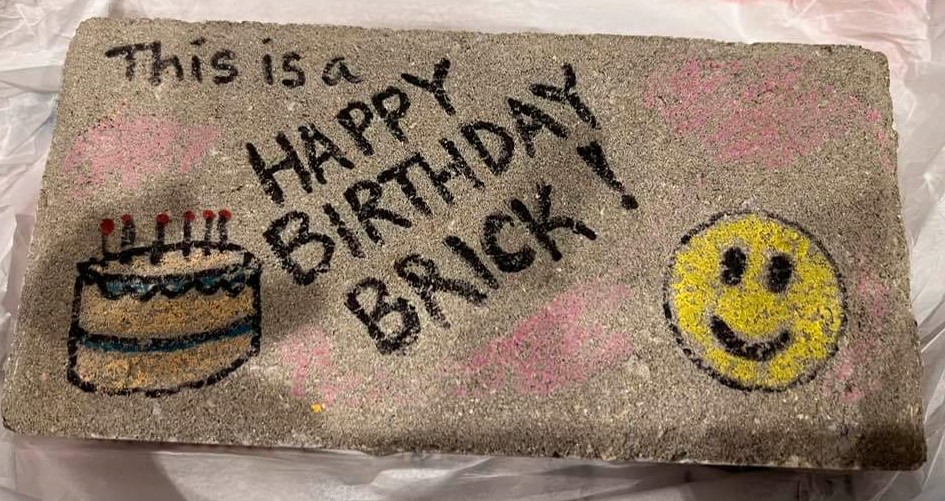
the ZIP Code
The Zoning Improvement Plan (ZIP) Code was launched in 1963 to better process and deliver increasing volumes of U.S. Mail. The first number in the five-digit ZIP Code represents a general geographic area of the nation, “0” in the east, moving to “9” in the west. The next two numbers represent regional areas, and the final two identify specific Post Offices. In 1983, the ZIP+4 Code was introduced.
Decoding the code. In 1983, the ZIP+4 Code was introduced. The extra four numbers enable mail to be sorted to a specific street. In 1991, two more numbers were added so that mail could be sorted directly to a residence or business. Today, the use of the ZIP Code extends far beyond the mailing industry, including being a fundamental component in the nation’s 911 emergency system.
There are 41,552 ZIP Codes in the country. They range from 00501, belonging to the Internal Revenue Service in Holtsville, NY, to 99950 in Ketchikan, AK. Easiest to remember? How about 12345, a unique ZIP Code for General Electric in Schenectady, NY.
Mr. ZIP helped promote the new ZIP Code concept in 1963.
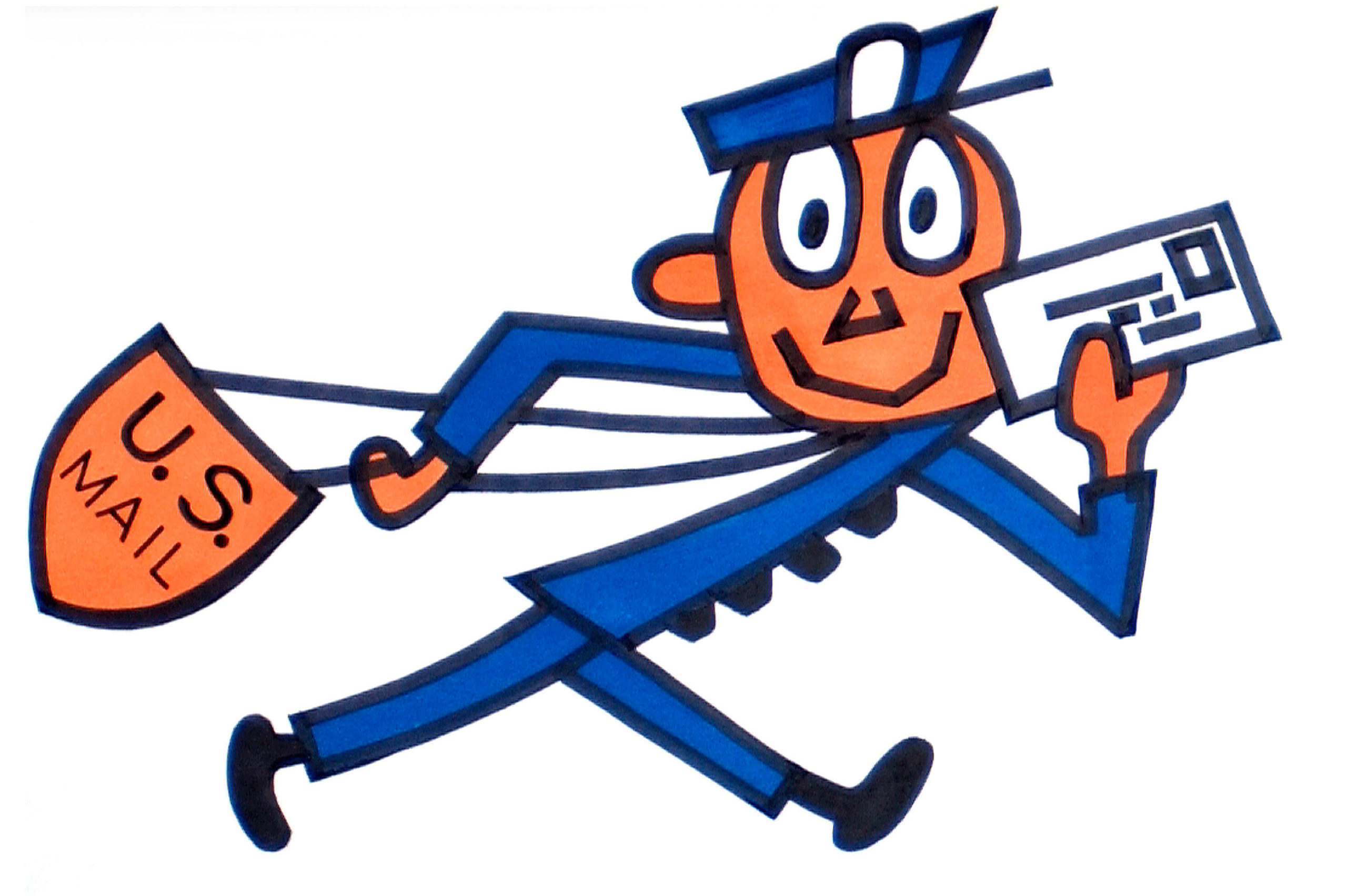
PO made of straw
In Corrales, NM, in 1999, a new Post Office was built with more than 900 bales of straw as insulation. The Post Office is still standing strong and saving energy — a proud testament to the Postal Service’s longstanding history of sustainable practices.


Corrales NM Post Office
We can still read it!
Chicken scratch. The Postal Service has an entire operation dedicated to deciphering poor penmanship.
Letter mail at a processing plant that cannot be read by the automated equipment has an image taken and transmitted to the Remote Encoding Center (REC). At the REC, employees look at the image and type in address information. The information is matched up with a valid address, the data is transmitted back to the equipment at the plant, and a barcode is printed on the letter. That barcode can be read by any letter processing machine in the Postal Service, keeping the letter within the automated stream of mail in the postal network.
Post Office
This Post Office floats! The Halibut Cove Post Office (99603) in Homer, AK, floats. The office is a small houseboat that is permanently tied to a dock.

Flies Here
No high-flying flag here. The B. Free Franklin Post Office in Philadelphia, which is part of Independence National Historical Park, does not fly the U.S. flag. This office aims to recreate the atmosphere of a colonial-era Post Office, and the Stars and Stripes did not yet exist in 1775.
Franklin used to own the building and there is a small museum on the second floor.

rubber bands
Boing! The Postal Service ordered more than 491 million rubber bands in 2024, which totals 27,152 miles of material, or one trip around the world.

blue collection boxes
Iconically ours. There are approximately 124,000 iconic blue collection boxes in use on street corners across the nation.
About those iconic blue boxes…
They weren’t always blue. Before 1970, they were green, then red, then white, then green again, and finally — beginning in 1955 — red, white and blue.
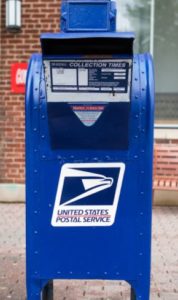


rubber bands
Boing! The Postal Service ordered more than 491.7 million rubber bands in 2024, which totals 27,152 miles of material, or one trip around the world.

postage stamp
A postage stamp was onboard NASA's New Horizons spacecraft that made a flyby of Pluto in July 2015. That’s the farthest distance traveled by a postage stamp — more than 3 billion miles, as noted by Guinness World Records.
The “Pluto: Not Yet Explored” 29-cent stamp was part of a set of solar system stamps that were issued in 1991. In 2015, the stamp made a flyby of Pluto while onboard NASA’s New Horizons spacecraft. Guinness World Records confirmed the more than 3-billion-mile journey is the farthest distance traveled by a postage stamp.
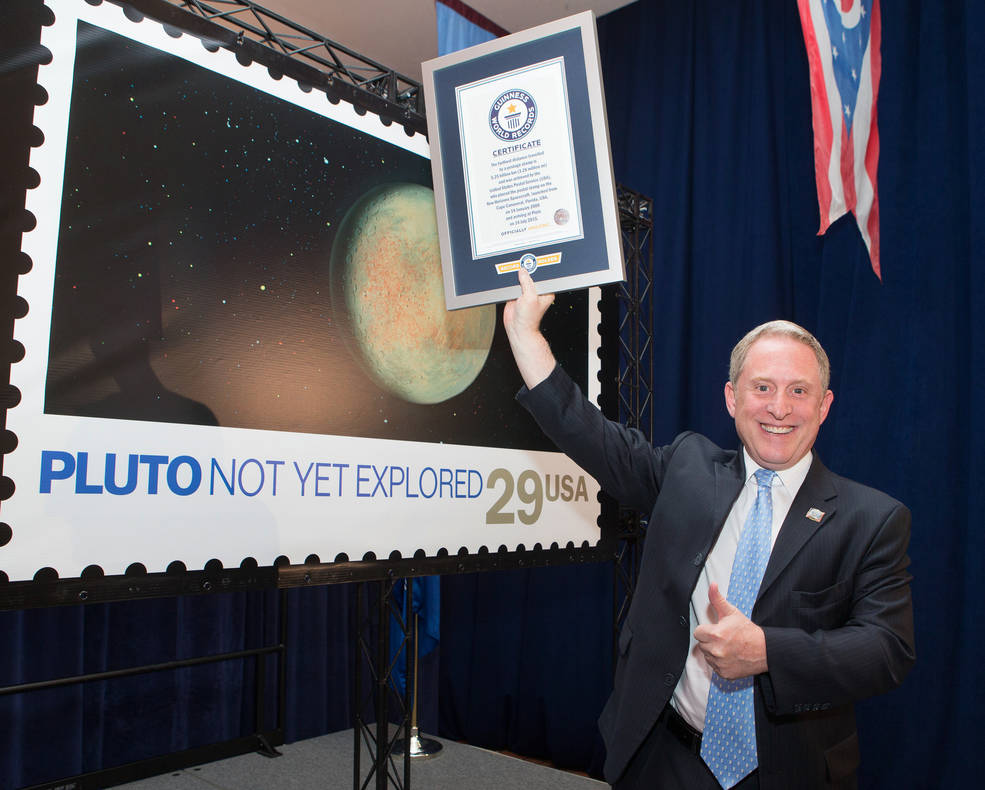
that motto
The U.S. Postal Service has no official motto. Nope, it’s not this phrase: “Neither snow nor rain nor heat nor gloom of night stays these couriers from the swift completion of their appointed rounds.” But we certainly appreciate the sentiment.
About that motto…
Those words are engraved on the front of the James A. Farley Post Office in New York City, set in stone by the architectural firm that built it. The phrase is taken from an ancient book by the Greek historian Herodotus and refers to messengers in the Persian Empire.
The phrase comes from book 8, paragraph 98, of The Persian Wars by Herodotus, a Greek historian. During the wars between the Greeks and Persians (500-449 B.C.), the Persians operated a system of mounted postal couriers who served with great fidelity.
The popular belief that Herodotus’s description of the Persian postal service is about the U.S. Postal Service is a tribute to the hundreds of thousands of men and women who have delivered the mail reliably and dependably, through all conditions, for centuries.

ZIP Codes
There are 41,552 ZIP Codes in the country. They range from 00501, belonging to the Internal Revenue Service in Holtsville, NY, to 99950 in Ketchikan, AK. The easiest ZIP Code to remember? How about 12345, a unique ZIP Code for General Electric in Schenectady, NY.
Quick! What’s that ZIP Code?
The Zoning Improvement Plan (ZIP) Code was launched in 1963 to better process and deliver increasing volumes of U.S. Mail. The first number in the five-digit ZIP Code represents a general geographic area of the nation, “0” in the east, moving
to “9” in the west. The next two numbers represent regional areas, and the final two identify specific Post Offices. In 1983, the ZIP+4 Code was introduced.
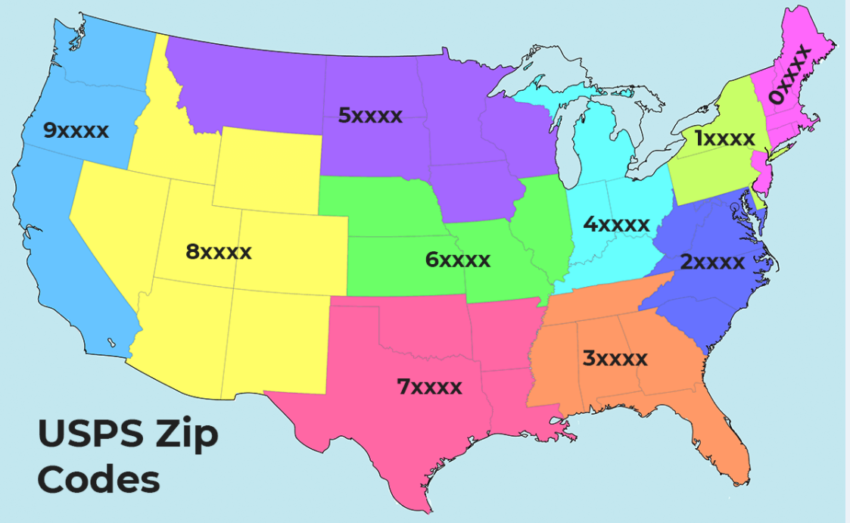
miles traveled
Stellar performance! During 2023, Postal Service employees traveled more than 1.2 billion miles to deliver your mail, equivalent to 48,191 laps around Earth, 5,023 trips to the moon or 13 trips to the sun.

deliveries from one office
The Post Office location with the most possible street deliveries is Heritage Station in San Antonio, TX (78245, 78250, 78251, 78253) — with 116,628 deliveries.
Trademarks
The Sonic Eagle Logo, the trade dress of USPS packaging, the Letter Carrier Uniform and the Postal Truck and the following marks are among the many trademarks owned by the United States Postal Service: Click-N-Ship®, Deliver The Win®, EDDM®, ePostage®, Every Door Direct Mail®, Express Mail®, First-Class™, First-Class Mail®, First-Class Package International Service®, Forever®, Global Express Guaranteed®, IMb®, Informed Delivery®, Intelligent Mail®, Label Broker™, Parcel Select®, P.O. Box™, Post Office®, Pony Express®, Postal Inspection Service™, PostalOne!®, Postal Police®, #PostalProud®, Priority Mail Express International®, Priority Mail Flat Rate®, Priority Mail International®, Priority: You®, Registered Mail™, Standard Mail®, The Postal Store®, United States Postal Inspection Service®, United States Postal Service®, U.S. Mail®, U.S. Postal Inspector™, U.S. Postal Service®, USPS®, USPS BlueEarth®, USPS Mobile®, USPS Operation Santa®, USPS Tracking®, usps.com®, We are people delivering to people™, ZIP+4® and ZIP Code™. This is not a comprehensive list of all Postal Service trademarks.
Non-Postal Trademarks
Dollar General®, Forest Stewardship Council®, How2Recycle®, McDonald’s®, National Dog Bite Prevention Week®, Starbucks®, Subway®, Sustainable Forestry Initiative®, The Climate Registry®.
Postal Facts 2024 provides the public with information about the U.S. Postal Service. The facts in this publication may be reproduced for the purpose of stating the fact itself, in a business, informational or academic context and the like, and in the body of text discussing factual subject matter relevant to the fact being presented. However, these facts may become outdated after publication and seeking the latest information is advised.
Produced by U.S. Postal Service Corporate Communications
© 2024 United States Postal Service. All rights reserved.
© 2016-2025 United States Postal Service. All rights reserved.
Trademarks
The Sonic Eagle Logo, the trade dress of USPS packaging, the Letter Carrier Uniform and the Postal Truck and the following marks are among the many trademarks owned by the United States Postal Service: Click-N-Ship®, Deliver The Win®, EDDM®, ePostage®, Every Door Direct Mail®, Express Mail®, First-Class™, First-Class Mail®, First-Class Package International Service®, Forever®, Global Express Guaranteed®, IMb®, Informed Delivery®, Intelligent Mail®, Label Broker™, Parcel Select®, P.O. Box™, Post Office®, Pony Express®, Postal Inspection Service™, PostalOne!®, Postal Police®, #PostalProud®, Priority Mail Express International®, Priority Mail Flat Rate®, Priority Mail International®, Priority: You®, Registered Mail™, Standard Mail®, The Postal Store®, United States Postal Inspection Service®, United States Postal Service®, U.S. Mail®, U.S. Postal Inspector™, U.S. Postal Service®, USPS®, USPS BlueEarth®, USPS Mobile®, USPS Operation Santa®, USPS Tracking®, usps.com®, We are people delivering to people™, ZIP+4® and ZIP Code™. This is not a comprehensive list of all Postal Service trademarks.
Non-Postal Trademarks
Dollar General®, Forest Stewardship Council®, How2Recycle®, McDonald’s®, National Dog Bite Prevention Week®, Starbucks®, Subway®, Sustainable Forestry Initiative®, The Climate Registry®.
Postal Facts 2024 provides the public with information about the U.S. Postal Service. The facts in this publication may be reproduced for the purpose of stating the fact itself, in a business, informational or academic context and the like, and in the body of text discussing factual subject matter relevant to the fact being presented. However, these facts may become outdated after publication and seeking the latest information is advised.
Produced by U.S. Postal Service Corporate Communications
© 2024 United States Postal Service. All rights reserved.
© 2016-2025 United States Postal Service. All rights reserved.